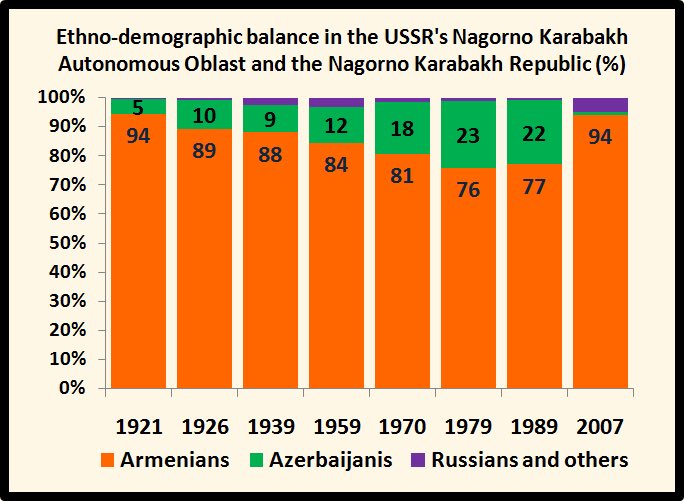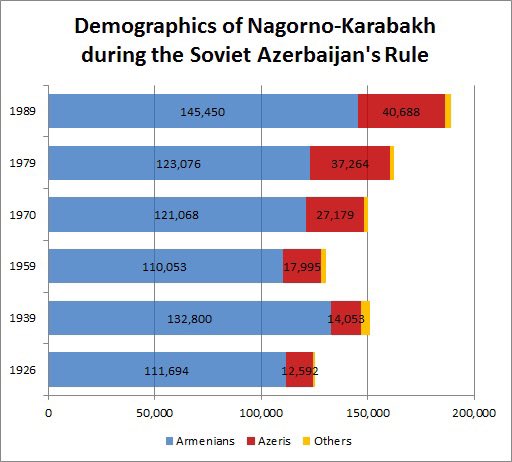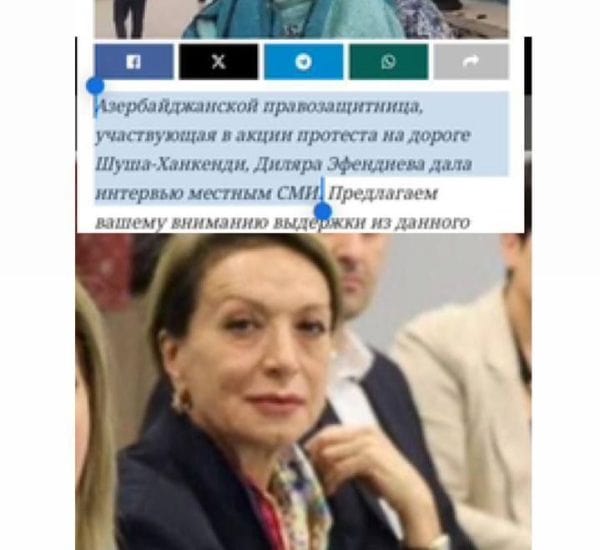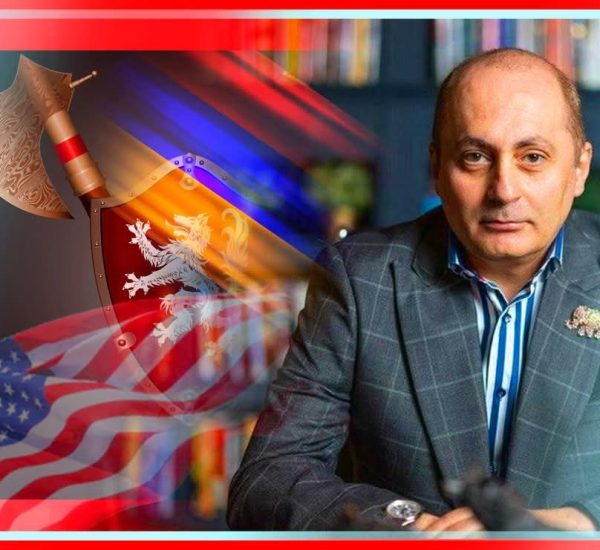
A false witness will not go unpunished, and he who breathes out lies will perish.
Since the conclusion of the 44-day long war that started in spring 2020 between Azerbaijan and Armenia, people around the world have gained more insight into what started this conflict, why it started and why there doesn’t seem to be a peaceful solution.
The war that started what seems like a century ago, intercepted by small periods of intolerant peace between the feuding sides, is very unique in all its aspects, turned out to be very unique and therefore not easy to resolve.
Overview and Aftermath of 2020 Nagorno-Karabakh Conflict
It all started when upon the collapse of the Soviet Union in 1989. The Nagorno Karabakh region at the time was inhabited mostly but ethnic Armenians but was surrounded by 7 districts inhabited mostly with ethnic Azerbaijanis. As the end of the Soviet Union drew near, the two sides began feuding.
The Armenians who lived in the Karabakh region wanted Karabakh to belong to Armenia, with the Azerbaijani population of Nagorno-Karabakh wanting the opposite.
The final result was the Republic of Artsakh, a seemingly temporary solution for Armenians in Nagorno-Karabakh to save themselves from the highhandedness of the Azerbaijan Government. This status quo lasted until 1992 when things escalated into a full-blown war that lasted until 1994.
With the signing of the latest of many ceasefires signed between these two countries, Azerbaijan undoubtedly came out as a winner of the story. Armenia, lead by an inadequate politics of their PM Nikol Pashinyan, by agreeing to all terms of the ceasefire lost the territory they were giving their lives for. Many Armenian soldiers lost their lives during the 2020 conflict and a staggering number of ethnic Armenian civilians were killed brutally by Azerbaijani army officers for nothing more than not abandoning their hearths.
With the signing of the latest of many ceasefires signed between these two countries, Azerbaijan undoubtedly came out as a winner of the story. Armenia, lead by an inadequate politics of their PM Nikol Pashinyan, by agreeing to all terms of the ceasefire lost the territory they were giving their lives for.
Many Armenian soldiers lost their lives during the 2020 conflict and a staggering number of ethnic Armenian civilians were killed brutally by Azerbaijani army officers for nothing more than not abandoning their hearths.
And while the death toll is still revised on both sides, with one country celebrating alleged ”liberation” and another left in shambles with protests against the government raging daily, the old questions remain. Who’s territory Nagorno-Karabakh really is?
According to history, the Armenians Were a Majority
One of the things that caused Armenians to go into a frenzy was, Azerbaijan stubbornly claiming that the territory in question historically belongs to Azerbaijan. The main factor that determines whose territory Nagorno-Karabakh seems to be the majority of the population on those territories.
The Armenians are trying hard to show that, if you look back in history, Armenians were always the majority in this region, therefore it should belong to them
One Armenian citizen decided to teach a history lesson on Twitter and show why Azerbaijan has no right to claim these territories as their own.
The latest statement from Azerbaijan that Syunik Province was Azerbaijani land made this Twitter user dig deeper and share the knowledge with the whole world.

Syunik Province was once part of the Zangezur District (Zangezur Uyezd). Where once was Zangezur District now you can find Syunik Province (Armenia) and Lachin, Qubadli and Zangilan (Azerbaijan).
In 1886 the Zangezur was under a Russian Empire and its population consisted out of 59,212 Armenians, 36,808 Azerbaijanis (including Tats and Persians), and 26,777 Kurds.

You can see already that the ethnic majority were in fact Armenians. But another thing you may have noticed is that the Azerbaijani population includes Tats and Persians.
This happened when the Russian Empire Imperial Census was conducted in 1897, but rather than collecting data based on nationality, it collected data based on the language and religion.
This made a distinctive difference between the Armenian-speaking population ( 71,206) and the Azerbaijan-speaking population (63,622). Kurdish-speakers count was 1,807 but most of them also spoke Azerbaijani Turkish.
The religion data showed that Zangezur Uyezd had 106 Armenian Churches, 1 Russian Orthodox Church, and 1 Russian Old Believer Church. On the other hand, the region counted only 33 mosques, 24 of which were Shia and 9 Sunni.
In 1926 things stayed the same and Zangezur majority was still the Armenian population. Out of 133,899 people, 66,455 were Armenians, 43,895 Azerbaijanis, and 20,952 Kurds. But then something weird happened.

In 1937 the Soviets managed to push out most of the Kurds to Central Asia. Two years later, the new census showed that the Armenian population numbers and Azerbaijan population numbers were almost a tie.
If we compare the 1926 census breakdown by districts with the 1939 census breakdown, we can learn exactly how Azerbaijan gained extra population.
Azerbaijani Appropriating Minorities
In the 1926 census breakdown population data of all nationalities was shown, but more importantly those of ethnic Tati or ”Caucasian Persian”. In Sisian for example, there were 2,868 Azerbaijanis and 1,382 Persians.
Now if you go to the 1939 census breakdown, Caucasian Persians mysteriously disappear from the data. The data only shows Armenians and Azerbaijanis, with a small number of Kurds.
The real reason why Azerbaijanis ”gained” population was that every other Muslim population of the Zangezur, like Tati or Kurds, was assigned to Azerbaijan and was therefore considered as ”Azerbaijanis”.
This was the way the Azerbaijani population managed to get close to Armenian numbers, by appropriating minorities all across the Zangezur. If we compare it to today’s world map, the districts where the data was collected in 1939 were Armenia’s Sisian, Goris, Kapan, Meghri, and Azerbaijan’s Lachin, Qubadli, and Zangilan.
Assimilation by Religion, Not by Nationality
This move from the Soviets helped Azerbaijan gain population, one which they were glad to call their own as it gave them leverage against Armenia. But the way those minorities were ”transcribed” as Azerbaijanis would not be so accepted today. The Soviets decided to consider every non-Turkish Muslim, as an Azerbaijani.
It raises the question of how many Azerbaijanis today have a Persian or Kurdish grand-grandfather, also casting a doubting shadow on their own true nationality. Are they really Azerbaijanis at all? Or were their ancestors simply not Turkish enough?
It is still unknown if the Azerbaijanis are familiar with these facts and data, although it should be mentioned that the data is accessible to everyone. There is also the added problem of Azerbaijan seemingly trying to rewrite history to suit their needs and justify their political actions and ambitions.
Furthermore, during the latest conflict with Armenia, Azerbaijan has shown incredible willingness to release news that was later proven to be fake. It makes us all wonder- if the war is Armenia’s legacy, was creating fake history Azerbaijan’s?
Only Time Will Tell.


